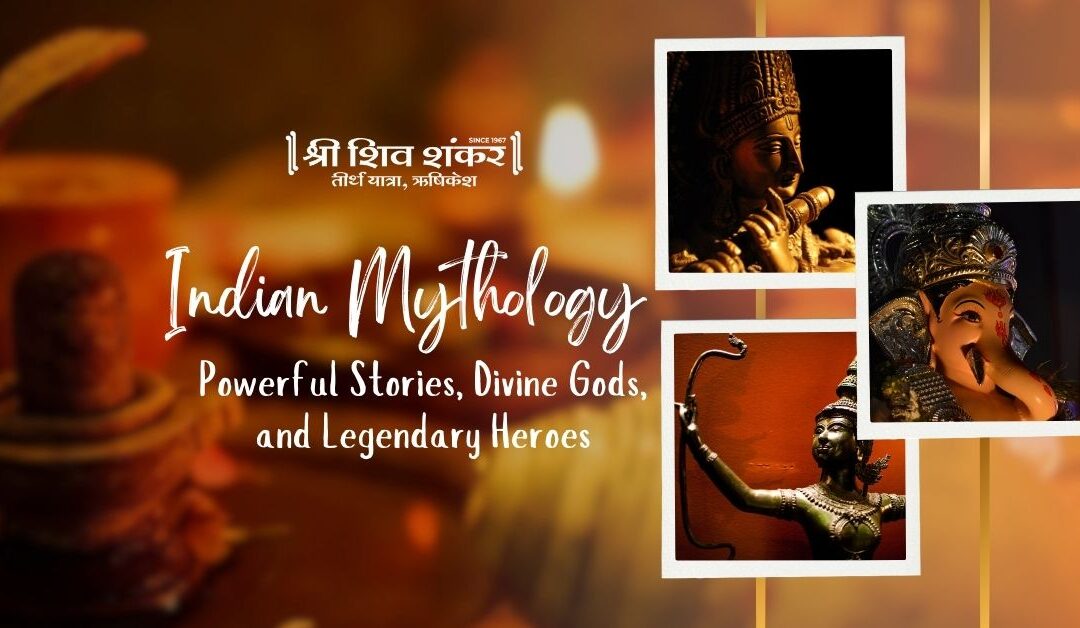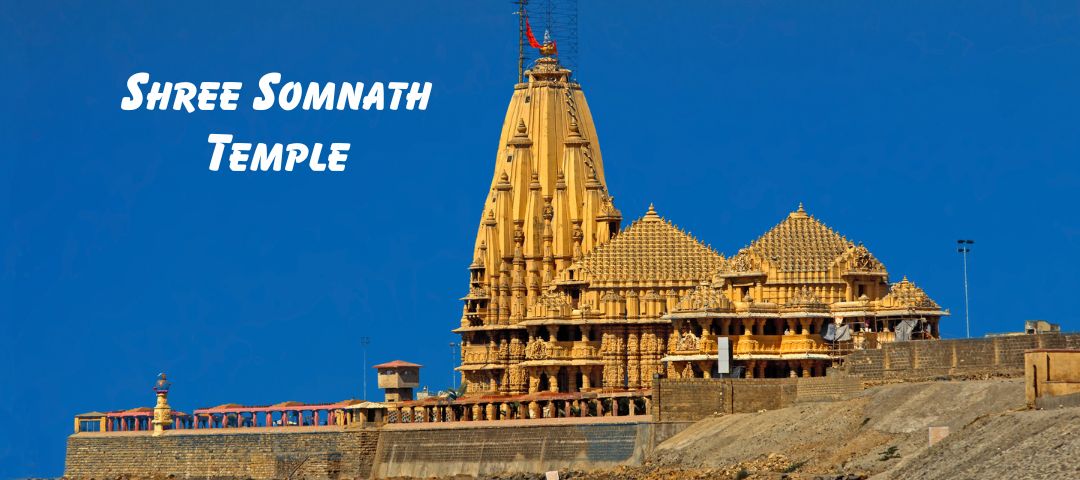A Complete Guide to Char Dham Yatra: Tips for a Spiritual Journey

The Char Dham Yatra is a holy pilgrimage where one can seek spiritual renewal. This yatra is undertaken to visit four of the holiest destinations in Uttarakhand that are popular for their divine atmosphere, and blissful presence. The yatra comprises Yamunotri, Gangotri, Kedarnath, and Badrinath. These holy places are dedicated to different gods; Yamunotri is the sacred abode of Goddess Yamuna, Gangotri is devoted to Goddess Ganga, Badrinath to Lord Vishnu, and Kedarnath to Lord Shiva. This holy pilgrimage starts at Yamunotri and concludes at Badrinath. Let us go on this journey of Char Dham in Uttarakhand.
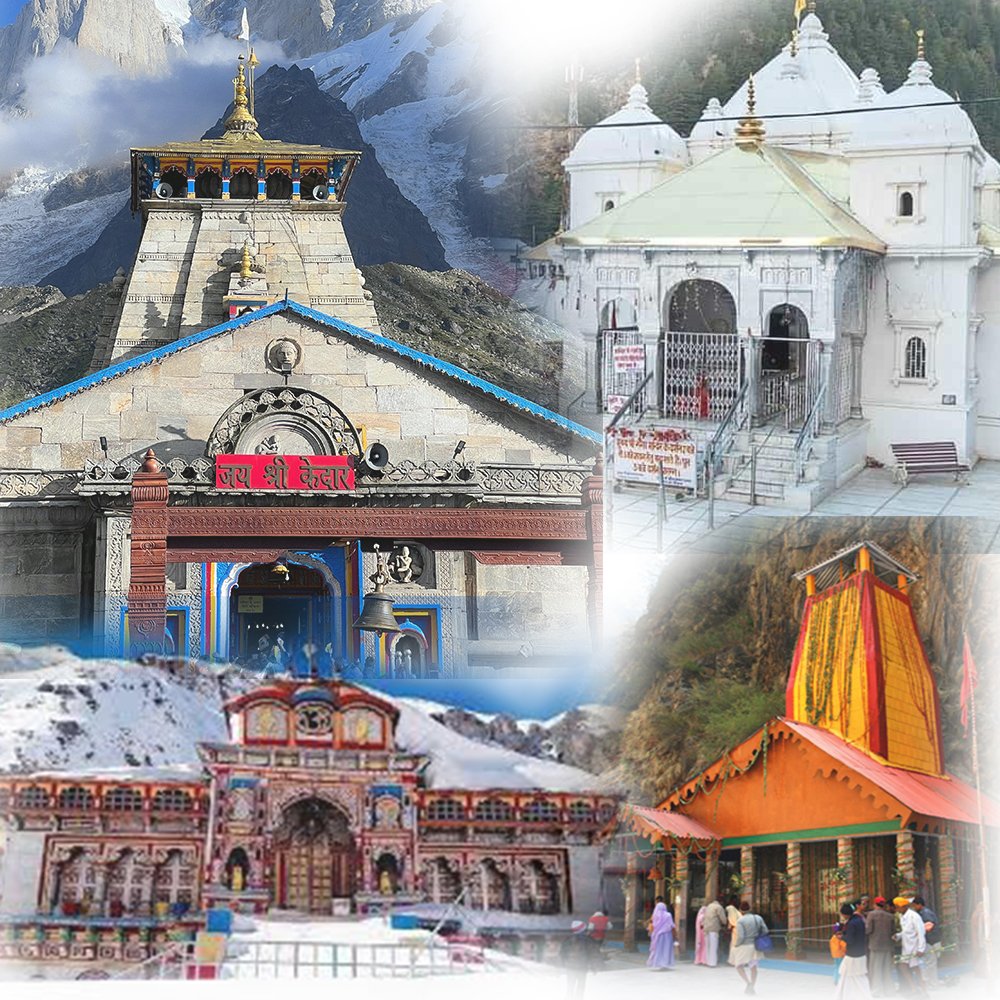
A Spiritual Journey at Char Dham
This holy pilgrimage is an opportunity for spiritual enlightenment and a chance for self-discovery. While visiting these dams; one can seek blessings from the superior being. So, don’t wait anymore and walk on a spiritual journey at Char Dham.
Yamunotri Dham
Yamunotri Dham is a sacred pilgrimage site that is known to be the origin spot of the Yamuna River. Yamunotri temple is the main attraction at Yamunotri, dedicated to Goddess Yamuna who is known to be the goddess of the river. In order to reach the temple, one needs to take a 66-kilometer trek from Janki Chatti. During this trek, one can indulge in breathtaking sceneries that offer majestic views of the Himalayan peaks. Yamunotri Dham also has two hot springs near the temple, and before entering the temple, pilgrims take a dip in these hot springs!

How To Reach Yamunotri Dham
One can reach Yamunotri Dham in Uttarakhand using multiple modes of transport, as this shrine is not directly accessible by road.
Nearest Airport & Railway Station
1. By Air:
Jolly Grant Airport (Dehradun) is the nearest airport, about 210 km from Yamunotri. One can take a taxi or a bus from here to reach Hanuman Chatti, the last motorable point.
2. By Train:
The nearest railway station is Dehradun Railway Station (175 km from Hanuman Chatti) or Rishikesh Railway Station (200 km from Hanuman Chatti). From there, taxis and buses are available to reach the base point.
3. By Road (Till Hanuman Chatti)
- From Delhi: Route: Delhi → Haridwar → Rishikesh → Dehradun → Barkot → Hanuman Chatti (Approx. 430 km)
You have the option to take a bus or you can hire a taxi from Delhi, Haridwar, or Rishikesh.
- From Dehradun: Route: Dehradun → Mussoorie → Barkot → Hanuman Chatti (Approx. 175 km)
Buses and taxis are available from Dehradun ISBT.
Trek from Hanuman Chatti to Yamunotri
- Hanuman Chatti to Janki Chatti (8 km)
- You can take a shared jeep or a pony ride.
- Janki Chatti to Yamunotri Temple (6 km Trek)
- The trek takes about 3-4 hours.
- Ponies, palkis (palanquins), and pitthus (carrying services) are available for those who cannot trek.
Alternative Option: Helicopter Service
- One can avail of helicopter service from Dehradun (Sahastradhara Helipad) to Kharsali Helipad, which is 5 km from Yamunotri. From Kharsali, you can hire ponies or trek to the temple.
Why Pilgrims Visit Yamunotri Dham
- Temple visit – Yamunotri Char Dham is known for the visit to Yamunotri Temple, which is dedicated to Goddess Yamuna. Most pilgrims indulge in a holy dip in the hot springs of Yamunotri before they visit the temple!
- Yamuna Aarti – This aarti is performed using lamps, and other offerings. This aarti is held in the evening; where pilgrims gather to see the traditional ceremony performed by the priests.
- Holy dip in Yamuna River – The Yamuna River is situated near the temple and taking a dip here is considered purifying. Many pilgrims advise that the sacred waters of the pure Yamuna River have the power to cleanse sins.
- Charan Paduka Darshan – Charan Paduka is a rock formation that is very much believed to be the footprint of the goddess Yamuna. Here, pilgrims trek to offer prayers and seek blessings.
Peak Timings to Visit Yamunotri Dham
Yamunotri Dham is open only for six months every year, from April/May to October/November.
- May to June (Summer Season) → Peak Season
- September to October (Post-Monsoon) → Less Crowded & Best Time
Avoid Visiting During:
- July to Mid-August (Monsoon Season)
- November to April (Winter Season)
Peak Hours at Yamunotri Temple
- Morning: 6:00 AM – 11:00 AM → Most crowded as pilgrims reach early
- Afternoon: 2:00 PM – 4:00 PM → Relatively lesser rush
- Evening Aarti: Around 6:30 PM → A spiritual experience but with moderate crowds
Note – Yamunotri temple will open on 30th April 2025 (tentative) for Char Dham Yatra 2025. The temple will close its gate for pilgrims on the day of Bhai Dooj, 23rd October 2025 (tentative)
Gangotri Dham
Gangotri Dham Yatra is known for its temple which is dedicated to River Ganga. This temple is located at the maximum elevation. It is believed that Amar Singh Thapa, a Gurkha leader constructed the Gangotri Dham Temple. It is also believed that the Ganges came to earth to wash away King Bhagirathi’s ancestors’ sins. Here devotees seek the blessings of goddess Ganga. Many peace seekers and nature lovers are much taken by the breathtaking views of Gangotri!
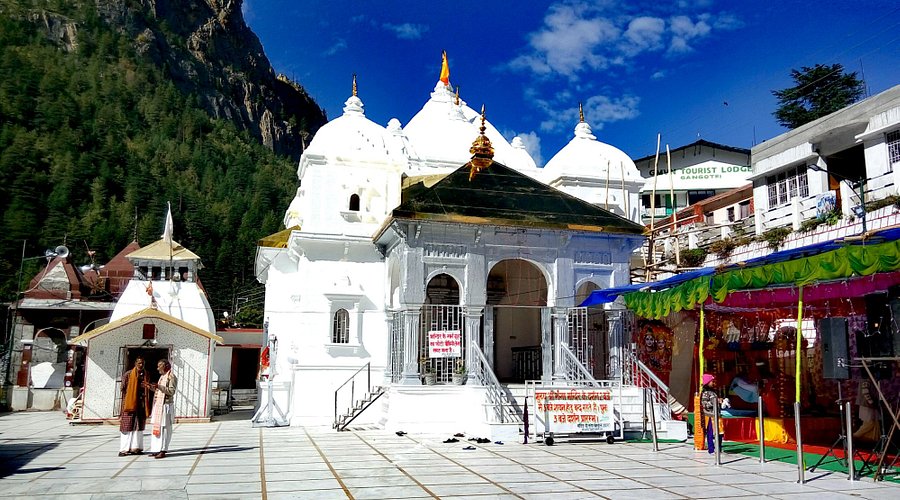
How To Reach Gangotri Dham
By Air
- Jolly Grant Airport, Dehradun is the nearest airport (Approx. 250 km from Gangotri).
- Then one can take a taxi or bus to Uttarkashi and then to Gangotri.
By Train
The nearest railway stations are:
- Rishikesh Railway Station (Approx. 240 km)
- Haridwar Railway Station (Approx. 270 km)
- Dehradun Railway Station (Approx. 250 km)
From these stations, taxis and buses are available to Gangotri via Uttarkashi.
By Road
Gangotri is well-connected by road with major cities in Uttarakhand.
- You can take buses or taxis from Haridwar, Rishikesh, Dehradun, or Uttarkashi.
- The journey from Rishikesh or Haridwar to Gangotri takes 10-12 hours.
- The route passes through Uttarkashi and Harsil, offering breathtaking views.
Trek & Helicopter Services
- Helicopter Services: Available from Dehradun (Sahastradhara Helipad) to Harsil (near Gangotri), followed by a short road journey.
- Trekking: If you’re an adventure seeker, you can trek from Harsil (25 km) or Lanka Bridge (10 km) to Gangotri.
Why Pilgrims Visit Gangotri Dham
- Gangotri temple visit – The core ritual of this yatra is to visit the Gangotri temple, which is dedicated to Goddess Ganga. Many pilgrims offer prayer and puja at the temple. This temple is open from May to November and rituals include morning and evening aarti, bhog, and special prayers.
- Ganga Snan – Many pilgrims believe that taking a dip in this sacred river purifies their sins and brings them blessings. They immerse themselves in the cold holy waters as a part of their spiritual journey.
- Submerged Shivling darshan – Pilgrims also visit the submerged rock, which is believed to be the place where Lord Shiva sat to receive Ganga in his locks. This shivling is located close to the Gangotri temple, and is a beautiful sight that builds one’s belief in the divine!
- Charan Paduka Darshan – Many pilgrims are also said to visit the Charan Paduka, believed to be the footprints of Lord Vishnu. This is considered a sacred place where Lord Vishnu was said to have meditated.
Peak Timings to Visit Gangotri Dham
Gangotri Dham is open for devotees from April/May to October/November, as it remains closed during winter due to heavy snowfall.
1. Summer Season (May – June)
- The weather at this time is having temperatures ranging between 10°C to 20°C
2. Post-Monsoon (September – October)
- After the monsoon, the lush greenery and fresh air enhance the spiritual experience.
When to Avoid?
1. Monsoon Season (July – August)
- Heavy rainfall causes landslides, roadblocks, and travel disruptions.
2. Winter Season (November – April)
- The temple closes after Diwali, and extreme cold and snowfall make travel impossible.
Note: Gangotri temple will open on 30th April 2025 (tentative) for Char Dham Yatra 2025. It will close on the day after the Diwali festival, 22nd October 2025 (tentative).
Kedarnath Dham
This is the core attraction for worshippers of Shiva. It is located at a beautiful location near the Mandakini River’s source, and at a 3,584 meters height. This dham is considered to be on the twelve Jyotirlingas and is a very important temple among the Panch Kedars. It has been believed that the Pandavas built this temple and Adi Shankara renovated it in the eighth century.
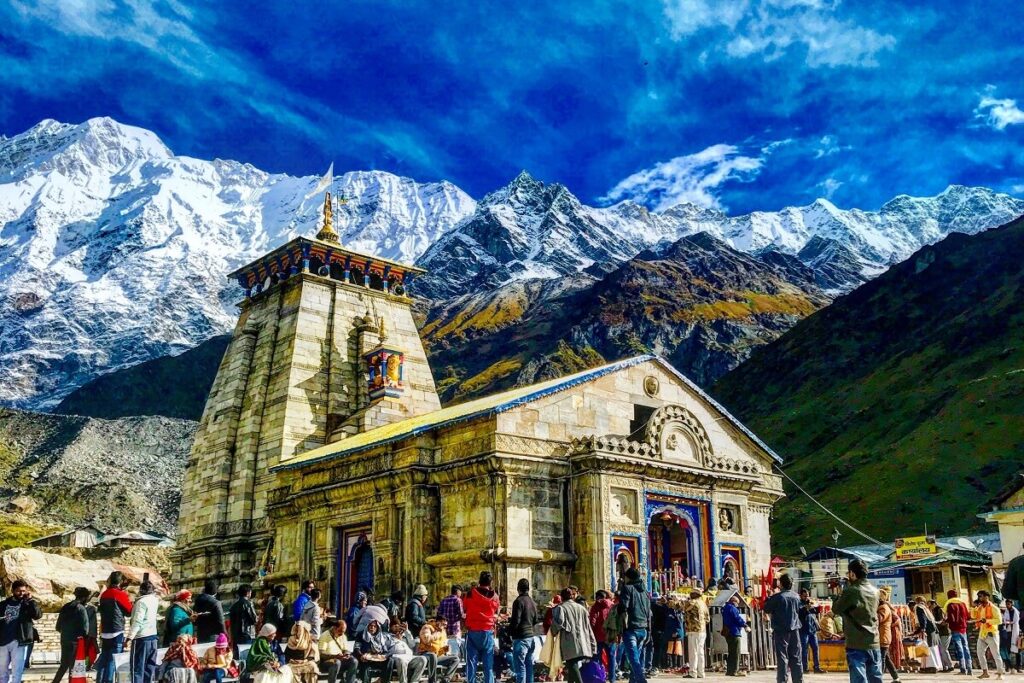
How to Reach Kedarnath Dham
By Air (Nearest Airport: Jolly Grant, Dehradun)
- Nearest Airport: Jolly Grant Airport, Dehradun (Approx. 250 km from Kedarnath)
- From Dehradun: one can take a taxi or bus to Sonprayag/Gaurikund, the last motorable point.
- Helicopter Services: Available from Dehradun, Phata, Guptkashi, and Sirsi to Kedarnath.
By Train (Nearest Railway Station: Rishikesh/Haridwar)
Nearest Railway Stations:
- Rishikesh Railway Station (Approx. 220 km from Gaurikund)
- Haridwar Railway Station (Approx. 240 km from Gaurikund)
- Dehradun Railway Station (Approx. 250 km from Gaurikund)
From These Stations: Hire a taxi or take a bus to Sonprayag/Gaurikund.
By Road (Last Motorable Point: Gaurikund)
Kedarnath is well connected to major cities in Uttarakhand via road. Key Road Route:
- Haridwar/Rishikesh → Devprayag → Rudraprayag → Guptkashi → Sonprayag → Gaurikund
- Buses & Taxis: Available from Haridwar, Rishikesh, and Dehradun to Sonprayag/Gaurikund.
Trek to Kedarnath (16 km from Gaurikund)
After reaching Gaurikund, a 16 km trek leads to Kedarnath Temple.
Popular Trekking Options:
- Walking/Trekking (6-8 hours, depending on fitness level)
- Pony/Mule Services (Available at Gaurikund)
- Palanquins (Palki/Doli) for elderly pilgrims
- Kandi (Basket Carriers) for small children or physically weak devotees
Why Pilgrims Visit Kedarnath Dham
- Kedarnath temple visit – The core ritual is to visit the Kedarnath temple, that is dedicated to Lord Shiva. The temple is open from April/May to November, and the core daily rituals include morning and evening aarti, bhog, and also special prayers during the occasions.
- Vasuki Taal – This is a mythological freshwater lake near the Kedarnath Temple in the Himalayas. As per legends and myths, Lord Vishnu bathed in this lake on the day of Raksha Bandhan. Thus, this became one of the important pilgrim sites.
- Bhairav Temple visit – The Bhairav Temple, is dedicated to Bhairav, an incarnation of Lord Shiva. There are thousands of pilgrims who come here and offer prayers and seek blessings from Bhairav for a successful pilgrimage!
- Rudra Path – Devotees and pilgrims may also participate in Rudra Path, a Vedic hymn dedicated to Lord Shiva. This is believed to be a very purifying practice and pilgrims often indulge in chanting rudram as a part of their spiritual walk.
Peak Timings to visit
Kedarnath Dham remains open for six months each year, from April/May to October/November. The temple closes in winter due to heavy snowfall
1. Summer Season (May – June)
- Best time for darshan with clear skies and comfortable trekking conditions.
2. Post-Monsoon (September – October)
- The monsoon has passed, making the trek safer.
When to Avoid?
1. Monsoon Season (July – August)
- Heavy rainfall causes landslides and roadblocks, making travel risky.
2. Winter Season (November – April)
- The temple closes after Diwali (October/November) due to heavy snowfall.
Note: Kedarnath temple will open on 02 May 2025 (tentative). The closing date of Kedarnath temple is fixed on Bhai Dooj, 23rd October 2025 (tentative).
Badrinath Dham
This is one of the sacred dham sites that holds much importance for the Hindus. The core highlight of the temple is the 3.3-foot tall Lord Badrinarayan’s black stone idol sitting in a meditative posture under the badri tree. The idol is said to be one of the eight most crucial Svayam Vyakta Kshetras – Lord Vishnu’s idols that manifested on their own without the help of any human!
In the 17th century, the temple was expanded by Garhwal kings. The temple houses murtis of Kubera, Uddhava, Narada Muni, Nar and Narayana.
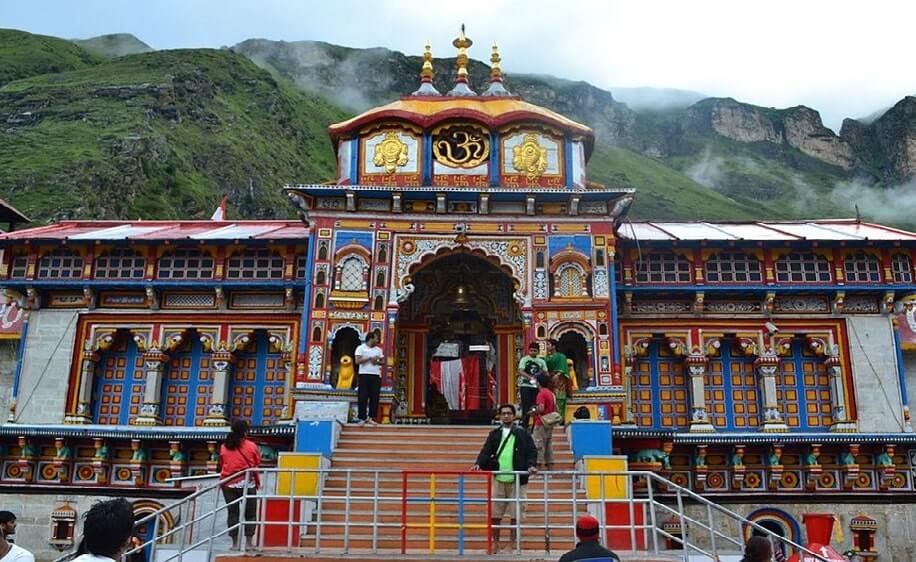
How To Reach Badrinath Dham
By Air (Nearest Airport: Jolly Grant, Dehradun)
- Nearest Airport: Jolly Grant Airport, Dehradun (Approx. 315 km from Badrinath).
- Hire a taxi or take a bus from Dehradun to Rishikesh or Haridwar, then continue to Rudraprayag or Joshimath, and from there, drive to Badrinath.
Helicopter Services:
- In Dehradun, you can get the service of a helicopter. (Sahastradhara Helipad) to Badrinath. This is a quick way to reach the temple, especially during peak pilgrimage seasons.
By Train (Nearest Railway Station: Haridwar/Rishikesh)
Nearest Railway Stations:
- Haridwar Railway Station (Approx. 290 km from Badrinath)
- Rishikesh Railway Station (Approx. 250 km from Badrinath)
Haridwar/Rishikesh to Rudraprayag, Joshimath, you will get the service of a taxi and bus and finally reach Badrinath.
By Road (Badrinath is Well-Connected by Road)
- Road Route: Haridwar/Rishikesh → Devprayag → Rudraprayag → Joshimath → Badrinath
- Distance: Approx. 290-315 km from Haridwar or Rishikesh.
- Buses & Taxis: Regular buses and taxis run from Haridwar, Rishikesh, Dehradun, and Delhi to Badrinath via Joshimath.
Helicopter Services to Badrinath
- Helicopter services are available from Heliports in Dehradun, Sahastradhara, and Haridwar to Badrinath. The ride takes about 30-40 minutes, offering a scenic view of the mountains and valleys.
- Booking: Helicopter services should be booked in advance, especially during peak seasons (May – June and September – October).
Why Pilgrims Visit Badrinath Temple
- Badrinath Temple Visit – Pilgrims visit the temple located at an altitude of 3,415 meters. The rituals at the temple include morning and evening aarti, bhog, and special prayers.
- Tapt Kund Snan – Pilgrims are of the belief that Tapt Kund is a major appeal there – a hot water spring located near the temple that has medicinal properties. Thus, before visiting the Badrinath temple, pilgrims bathe in the hot waters of Tapt Kund, as it is considered purifying.
- Hemkund Sahib Visit – Many pilgrims also visit Hemkund Sahib, a Sikh shrine located near Badrinath. This is believed to be a place of spiritual significance and pilgrimage for Sikhs. Here, pilgrims take a bath in the holy lake and also participate in community service.
- Rudra Abhishek and Puja – This is a sacred ritual performed by Rudra Abhishek, which involves offerings of milk, water, honey, ghee and other sacred materials to Lord Shiva.
Peak Timings to Visit Badrinath Temple
1. Summer Season (May – June)
- This is the most popular time for pilgrimage, with clear weather, comfortable temperatures, and good road conditions.
2. Post-Monsoon (September – October)
- Fewer crowds than in the summer months, making it more peaceful and comfortable.
When to Avoid?
- Monsoon Season (July – August)
- Heavy rainfall leads to landslides, roadblocks, and travel delays
- Winter Season (November – April)
The temple closes after Diwali for the winter months due to snow and extreme cold.
Note: Badrinath Dham will open on 4th May 2025 at 6:00 am for Char Dham Yatra 2025. This year Badrinath will be closed on 06 November 2025 (tentative)
Tips to Keep in Mind Before Starting Char Dham Yatra
- The very first thing to keep in mind is to avoid visiting any of the dhams during the monsoon season. As one can face landslides and floods in Uttarakhand.
- If you are travelling by car then make sure the driver is experienced to drive on rocky roads. There are many danger points on the way to these temples, and so one should drive with precaution.
- One should carry woolen clothes, a blanket, an umbrella, and also canvas shoes to protect themselves from the cold.
- Keep with yourself a medical kit that includes painkillers, antibiotics, antiseptic cream, and also medicines for cold and fever.
Conclusion: Avail Uttarakhand Char Dham Yatra Package
Thus, go forward on this spiritual journey of 4 Dham in Uttarakhand that offers solace, enlightenment, and a chance to get rid of the hecticness of city life.
The Char Dham Yatra provides a great opportunity to seek blessings, and also purify the mind and soul. For those who wish to undergo this divine journey, you can approach Shiv Shankar Teerth Yatra to guide you and organize your Char Dham Yatra Package Uttarakhand.
With various travel options including bus, train, or flight yatras, we ensure you a comfortable and hassle-free experience! Approach us today for a wonderful adventure!
So, pilgrims who want to visit Chardham in 2025 should pre-plan their Char Dham Yatra in advance. Book Char Dham Yatra with us at Shiv Shankar Tirth Yatra and get a great budget package!
FAQs
1. At what time of the year should Char Dham Yatra be undertaken?
The best time for Char Dham Yatra is during the summer months of May and June or the post-monsoon season, that is, September to October when the weather is pleasant and travel safer.
2. Do the Yatris get accommodation facilities for the entire journey?
At each of these places, there are government guest houses, private hotels, and Dharamshala to cater to the large crowds.
3. Which of the following are some common obstacles at the time of the Yatra?
Common obstacles are high altitudes, long treks, unpredictable weather, and congested temples during peak seasons. Get ready for this physically and mentally.
4. What are some suggested tips to maintain health during the Yatra?
Hydration, light food, rest, and carrying necessary medicines can be good for maintaining health. Regular physical exercise before the yatra can also prepare your body for trekking.
5. What are the necessary permits to avail of 4 Dham Yatra?
The pilgrims must register themselves for 4 Dham Yatra at the government-authorised portals that allow them to visit the places there, besides regulating the inflow at these places during peak seasons.
Do you have any questions?
Feel free to give us a call. We have a team of experts ready to answer all your queries. Thank you.
Popular Posts
Popular Categories

